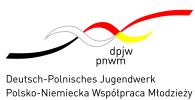Borne Sulinowo is a place that combines German, Polish, Soviet, and Russian history of the region. Borne Sulinowo, known as Great Born/Pomerania until 1945, had been a German military training area since the end of the First World War. The National Socialists expanded the training area and deployed German Wehrmacht troops. During the Second World War, Polish, French and Soviet soldiers were held prisoner here and subsequently killed. Borne Sulinowo was a Soviet army garrison town from 1945 and 1991 that was subsequently taken over by Russian Republic and run by the Russian army until 1992. Only after the withdrawal of the army, the former military restricted zone was open to civilians. Construction on a new town in Borne Sulinowo began in 1993.
The old and new Borne Sulinowo is visible at many locations. Ruins, wastelands, memorials and converted architecture bear witness to a turbulent past. The students faced the history of three sites: the remains of the prisoner of war camp and a memorial, the ruins of a former German officers’ mess and a former housing complex of Soviet army personnel. Based on the history of these sites, the students developed their ideas and their implementation in the respective workshops. The students were especially moved when Dariusz Czerniawski, director of the memorial site in Borne Sulinowo, read them a letter written by a Polish officer to his fourteen-year-old son. The letter, written in 1944, finally reached its intended recipient in 2005. After tedious research, Dariusz Czerniawski was able to identify the son and forward the letter after so many years. Today this letter is a precious document of the memorial site. Its content and the fate of the persons concerned became a key theme for the workshops and the presentation.
The Memorial Site of Borne Sulinowo:
In the Woods
This site contained prisoner of war camps that were located around 14 kilometers away from Borne Sulinowo. The foundations of the barracks buildings are overgrown. On these grounds, the German Wehrmacht murdered 11,000 Soviet prisoners. Birch wood crosses are reminders of this site’s tragic past.
The Ghost Town
This is where members of the Soviet army lived after 1945. Except for a few houses, the settlement has been demolished. It tells the history of the liberators/occupiers. This formerly off-limits area became accessible to the civilian population in 1993.
The Officers’ Mess
With a view onto the lake, the generously designed officers’ mess (Common House and Dining Hall for the Officers) had a special location. A fire destroyed the vacant officers‘ mess a few years ago. The ruins of the officers’ mess are still impressive; the view onto the lake and onto the woods calls forth associations of castle grounds.














